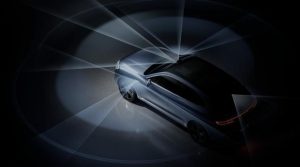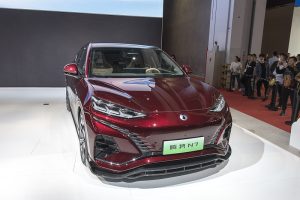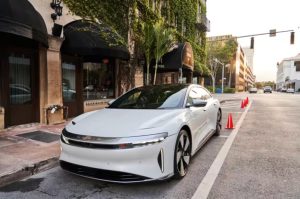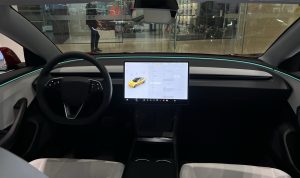Protested Robotaxi: Controversy Surrounding the Open Operation of Autonomous Taxis
8 min read
It has been over a month since San Francisco opened up to autonomous taxi services, with a recent incident involving a delayed ambulance response leading to protests and criticism. The way Robotaxi services were introduced and coordinated with emergency vehicles has sparked ongoing debates, drawing attention from domestic industry peers.
One month ago, San Francisco allowed Waymo and Cruise autonomous vehicles to operate freely. However, multiple accidents involving Cruise vehicles have caused traffic congestion and sparked public protests. The ongoing controversy surrounds how Robotaxi services were introduced and the coordination with emergency vehicles, providing valuable lessons for policy formulation in China.
Since San Francisco fully opened up to Waymo and Cruise for commercial operations, a mere month has passed, yet it has been a rollercoaster ride of events. Is Robotaxi truly ready to become an integral part of daily life?
Zhu Xichan, a professor at Tongji University’s School of Automotive Studies and Director of the Institute of Automotive Safety Technology, commented that the California government’s decision to allow unrestricted operations of Robotaxi through a “vote” is an innovative approach to government management. He stated, “I didn’t expect it, and I greatly admire the U.S. government’s support for technological innovation.”
However, looking at accident rates, there are still significant safety concerns regarding autonomous driving technology. The unconditional opening of Robotaxi services may seem somewhat “premature.” Judging from the experiments in San Francisco over the past month, there appear to be many lessons that can be applied to China’s policies.
1. A Fatal Incident Linked to Robotaxi
On August 10th, following a six-hour marathon public review session, the California Public Utilities Commission voted 3 to 1 to pass a resolution that would no longer limit the number of autonomous vehicles, road sections, and operating hours for Waymo and Cruise. They would be allowed to operate paid Robotaxi services around the clock in San Francisco.
For Cruise, Waymo, and the entire autonomous driving industry, this approval marked a significant milestone. It signified the official start of Robotaxi’s full-scale commercialization. Additionally, Waymo’s speed limits within the city were raised to 65 miles per hour (approximately 104.6 kilometers per hour), while Cruise’s speed limit was set at 35 miles per hour (approximately 56.3 kilometers per hour).
However, developments took an unexpected turn.
Just a week after the restrictions were lifted, Cruise experienced multiple accidents, leading to the California Department of Motor Vehicles (DMV) launching an investigation. Pending the formal investigation results, Cruise was instructed to reduce its operating vehicles by half, limiting daytime operations to 50 vehicles and nighttime operations to 150 vehicles.
The most severe incident occurred on the evening of August 14th when two Cruise Robotaxis were accused of blocking an ambulance, resulting in a delayed response to a crash victim who ultimately died despite rescue efforts.
A report from the San Francisco Fire Department stated that any delay caused by Robotaxis, “no matter how minor,” “will lead to a poor prognosis for patients, delaying the definitive care required for severe trauma cases.” The primary responsibility for the victim’s death was attributed to the Robotaxi.
This incident led to protests outside Cruise headquarters in San Francisco on September 2nd.

Cruise has released a statement countering the report from the fire department, stating that their vehicles did not impede the ambulance’s path to the hospital.
At the scene, there were two Cruise Robotaxis, one of which deviated from its route, crossing the intersection where the accident occurred. However, the vehicle did not obstruct the ambulance’s route but had already moved away before its arrival.
TechCrunch, a media outlet, reviewed the videos provided by Cruise to some media outlets and found that the on-site situation roughly aligned with Cruise’s description in their statement.
Furthermore, Cruise experienced three similar incidents in succession. One Robotaxi got stuck on a partially dried cement road and had to be towed by Cruise staff. Near a music concert venue, ten Cruise Robotaxis were involved in an accident, blocking traffic (see: “San Francisco Faces Another Robotaxi Strike on the Second Day of Full Robotaxi Operation in the City”). Additionally, there was a collision between a Robotaxi and an emergency response fire truck at an intersection.
According to records from the San Francisco Fire Department, there have been 12 incidents involving Robotaxis disrupting emergency management systems since the full operation was allowed on August 10th. Fire Chief Jeanine Nicholson complained to Forbes, saying, “All a car has to do is stop somewhere and we’re screwed.”
She asked, “Who is going to be sitting there holding the bag when we can’t get to a building and somebody dies?”

Cruise’s response to the incidents near the music festival is that they were caused by network issues. The high number of people attending the festival resulted in poor network signal quality for the Robotaxis. This once again highlights a challenge that autonomous driving needs to address, which is the uncertainty of network conditions.
These incidents have also angered government officials who, in an August proposal, called for the state government to reconsider its decision to allow Waymo and Cruise to expand services in San Francisco. Officials believe that incidents involving autonomous vehicles may “occur more frequently with expansion and lead to more serious injuries.”

Carnegie Mellon University professor Phil Koopman believes that if these companies continue to operate without significant safety improvements, more serious incidents are only a matter of time.
Before announcing her vote in favor, California Public Utilities Commission (CPUC) Commissioner Darcie Houck warned Cruise and Waymo that approving expansion “comes with enormous responsibility, and they must fulfill that responsibility by making safety their number one priority.” She stated that the CPUC and the California Department of Motor Vehicles have the authority to revoke or alter these companies’ permits.
On the other hand, Cruise CEO Kyle Vogt, in an interview with The Washington Post, expressed that most of the company’s anxiety actually comes from public bias against Robotaxis.
Autonomous driving, as a new technology, receives widespread public attention, so even minor mistakes can cause a public outcry. However, Vogt sees this as a double standard. He believes that human drivers are far from perfect, yet people accept various mistakes made by human drivers but cannot tolerate small errors from autonomous vehicles.
Vogt mentioned that most of Cruise’s incidents involve traffic congestion or getting lost, without causing serious harm. Human drivers break various traffic rules every day, such as running red lights, using non-motorized lanes, or speeding, and people accept these behaviors as normal, but they magnify the mistakes of Robotaxis.
“We’re talking about a 15-minute traffic delay, but the benefits Robotaxis bring to the community are immeasurable public goods.”
Jeffrey Tumlin, head of transportation at the San Francisco Municipal Transportation Agency, described the challenges brought by Cruise’s autonomous vehicles in an interview: “Autonomous cars are like my 85-year-old grandfather, who is a very, very cautious driver and has never hit anything, but he causes total chaos around him because his behavior is unpredictable. Whenever he gets confused while driving, he stops.”

The data shows that since the beginning of 2022, Cruise has been involved in 241 incidents related to autonomous vehicles, with 64 of them being collisions. In the data provided by Cruise for the year 2023, from January to the end of June, there were 177 incidents, while Waymo reported 58 incidents of unintended stops during passenger rides during the same period.
However, Vogt remains very optimistic about autonomous vehicles becoming the default mode of transportation in San Francisco. He believes that the deployment of autonomous vehicles will ultimately make the city’s roads safer. In 2022, the city saw 39 deaths due to traffic accidents, the highest number since 2007. This is also why San Francisco approved the unrestricted operation of Waymo and Cruise Robotaxis. Supporters believe that autonomous vehicles will make the roads safer as Robotaxis will never drive drunk, tired, or distracted.
Currently, Cruise is still awaiting the results of the DMV investigation. Vogt mentioned that the company continues to upgrade its technology, and its service area will expand from city streets to highways in the future.
Previously, Cruise stated its intention to bring autonomous driving services to Los Angeles, Dallas, Austin, Miami, Atlanta, and Nashville. Waymo also plans to expand to Austin in addition to its planned expansion in Los Angeles.
It appears that Cruise has a more aggressive expansion strategy compared to Waymo.
Regarding the situation in China, cities like Beijing, Shanghai, Guangzhou, and Shenzhen have opened autonomous vehicle testing areas, with Guangzhou even issuing operating permits for self-driving taxi services like Pony.ai.
Professor Zhu Xichan believes that the policy in San Francisco of unconditionally allowing Robotaxi operations is a bit too forward. He suggests that China should not necessarily follow the same path and points to Germany’s regulations as a more worthy reference. Zhu Xichan believes that it’s essential to establish technical standards and amend road traffic safety laws for autonomous vehicles to safely hit the road. Currently, China is working on relevant regulations in this regard.
After Shenzhen enacted the “Shenzhen Economic Zone Intelligent Networked Vehicle Management Regulations” in June 2022, the Ministry of Industry and Information Technology (MIIT) issued a notice in November about initiating pilot projects for the admission and on-road operation of intelligent networked vehicles, which covers L3 and higher levels of autonomous driving. These guidelines provide clear instructions at the national level for the admission and on-road operation of L3/L4 autonomous vehicles.
In terms of overall direction, China is gradually opening up the on-road operation of high-level intelligent networked vehicles in a relatively cautious manner.
Autonomous driving companies in China are taking different approaches to reach their goals. Baidu predicts that by 2025, L4-level autonomous vehicles will be running on the complex roads of some Chinese cities. Didi Autonomous Driving’s Chief Operating Officer Meng Xing has stated that they are advancing the production of mass-produced autonomous electric vehicles with partners and plan to start mass production in 2025, with a gradual rollout in different locations.
Currently, autonomous driving companies in China are operating L4-level autonomous vehicles within designated areas as allowed by regulations. Didi Autonomous Driving’s approach is to prioritize areas that are suitable for autonomous driving and economically valuable to ensure product quality and cost-effectiveness. Eventually, L4 autonomous driving companies can gradually expand their operating areas while maintaining their technical capabilities and lowering costs.
According to publicly available data, there are approximately 700 autonomous test vehicles from Waymo and Cruise in San Francisco, while the total number of ride-sharing vehicles in the city is estimated to be between 8,000 and 10,000. The proportion of test vehicles has already reached 7%-10%, which is a significant presence for Robotaxis.
San Francisco’s decision to open up autonomous vehicle operations through voting demonstrates the public’s expectations for autonomous driving technology. However, the multiple incidents serve as a warning that fully unleashing autonomous driving is not yet fully mature in terms of technology and societal acceptance.
However, it’s worth considering that even when reaching L5-level autonomous driving, vehicles cannot achieve perfect driving. Just like human drivers make mistakes, autonomous vehicles will also have occasional errors. The key is that autonomous vehicles can achieve a lower error rate than humans, making them safer in terms of road safety.
At this stage, as regulations gradually improve, starting from relatively limited driving areas, refining technology, reducing costs, and expanding the operating range are feasible paths for Robotaxis.
What we need is to give autonomous driving a bit more time and confidence rather than making hasty decisions with a “No More Robo” approach.




